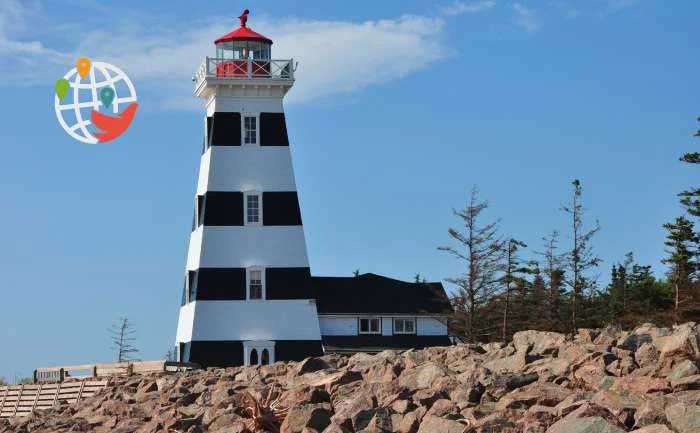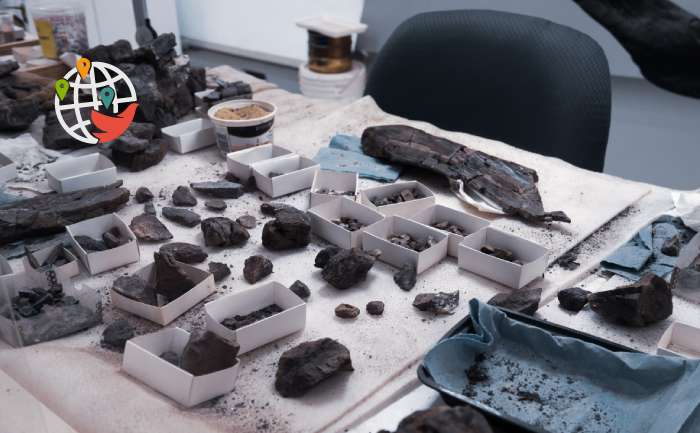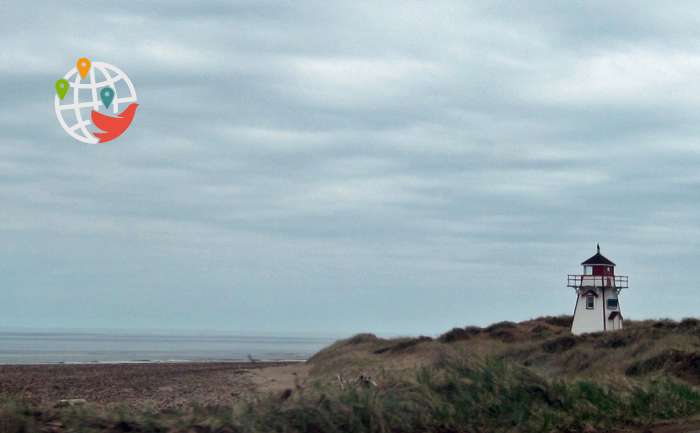A schoolteacher stirred up the world's paleontologists with her discovery

What wonders does Prince Edward Island hold?
Lisa Cormier was walking along the beach at Cape Egmont Prince Edward Island when she noticed something strange and decided to take a closer look. So the schoolteacher made a major paleontological discovery — a fossil 300 million years old. She says she didn't immediately realize what it was:
"I saw something I thought was a root. But when I looked closely, I realized there were ribs. And then I saw the spine and the skull.
Cormier took a picture of her find and shared it with her family. Her mother-in-law sent the photo to specialists, who immediately contacted Lisa.
One of them, John Calder, a geologist and paleontologist, says the fossil appears to date from the late Carboniferous and early Permian. That's about 300 million years ago. As an expert and author of a book on the geological heritage of Prince Edward Island, he says such finds are extremely rare.
The fossil has not been identified, but experts say it is probably a reptile, or at least a very close relative. Calder says that very few specimens from that period have been found and it may even be a previously unknown species:
"This is the beginning of the evolution of reptiles from amphibians... So, it's going to be a real puzzle. It will probably take a whole year to figure out the nature of this thing."
A team of paleontologists traveled to the excavation site and after a few days of work were able to transport the fossil from its discovery site to a facility in Greenwich for further transfer to the paleontological laboratory.

The find is rare, but understandable: all of Prince Edward Island is formed of red sandstone, a mixture of argillite, and claystone, which was deposited during the Permian period. At that time, the climate of the area was very different, and the ocean was five hundred kilometers away.
Geologist Laura McNeil tells that one of the earliest conifers in rock history can still be seen on the island. It doesn't look at all like a tree as we understand it: the woody material has been completely replaced by minerals, and there's a reason for that. McNeil explains: over time, the climate got hotter and drier, which was fatal for plants. So they had to adapt and evolve, and this is what led to the evolution of conifers.
So troves like the one found by Lisa Cormier delight, but do not stun, the Paleontological Society of Canada, still recently wondering about the bones found here more than 150 years ago.
A cast of the first fossil found on the island is a textbook used in a biology class at Prince Edward Island University-and it is the partial remains of a dimetrodon skull found in 1845.
Dimetrodons are well known huge ancient reptiles that had giant spiny "sails" on their backs. They were the main predators that stalked and ate giant salamanders in the paired swampy forests of the early Permian.

The story of this find is as amazing as Lisa Cormier's: Farmer Donald MacLeod was digging a well near New London when he discovered part of an upper jaw, including several sharp, curved teeth. Having no idea what it was, he sold the fossil to the Academy of Natural Sciences in Philadelphia so that it could be examined by Joseph Leidy, one of the few paleontologists who studied such artifacts of North America at the time. Leidy thought the fossil was the lower jaw of a dinosaur, and named the species Bathygnathus borealis.
Since then, it has been studied dozens of times by paleontologists, and only in 2015, more than 150 years later, could it be identified as a dimetrodon. This raised the ears of the entire paleontological community and once again reminded us that Prince Edward Island is a very special place.
Meanwhile, Lisa Cormier, who made an invaluable gift to all involved, calls what happened a unique opportunity to leave her mark on the history of science:
"To think that I found something that might be 300 million years old, it's incredible."
She claims that she is going to continue her search because this incredible good fortune has inspired her to do more.
If you are on Prince Edward Island now, be careful on your walks, and if in the slightest doubt, call the Provincial Archaeologist at 902-368-6895.
For those who would like to settle in this beautiful place, there is the provincial immigration program and the Atlantic program. If you are unsure and would like to reliably assess your chances, we recommend that you contact our licensed immigration counselor. Go here, sign up for a consultation and change your life.





























